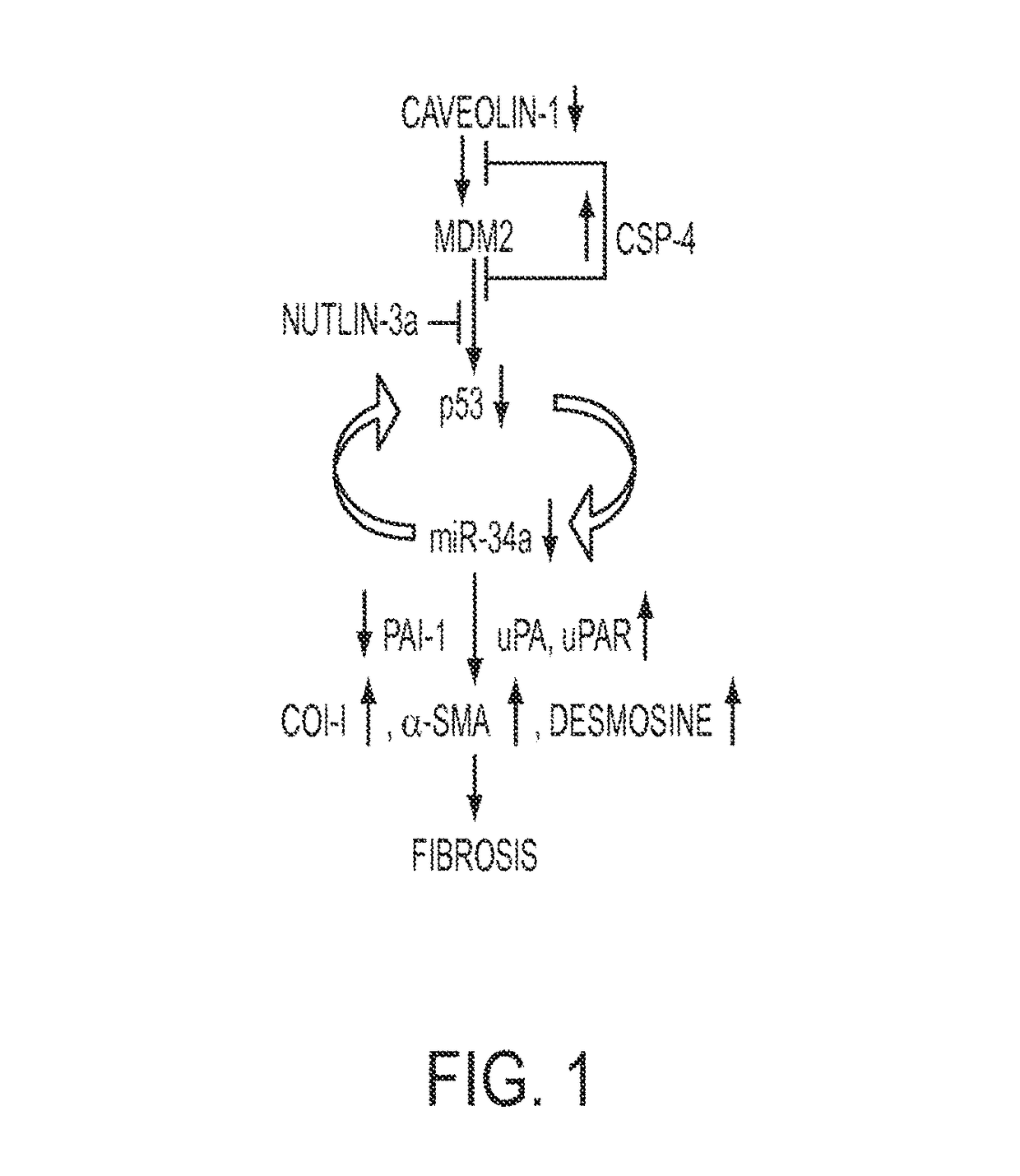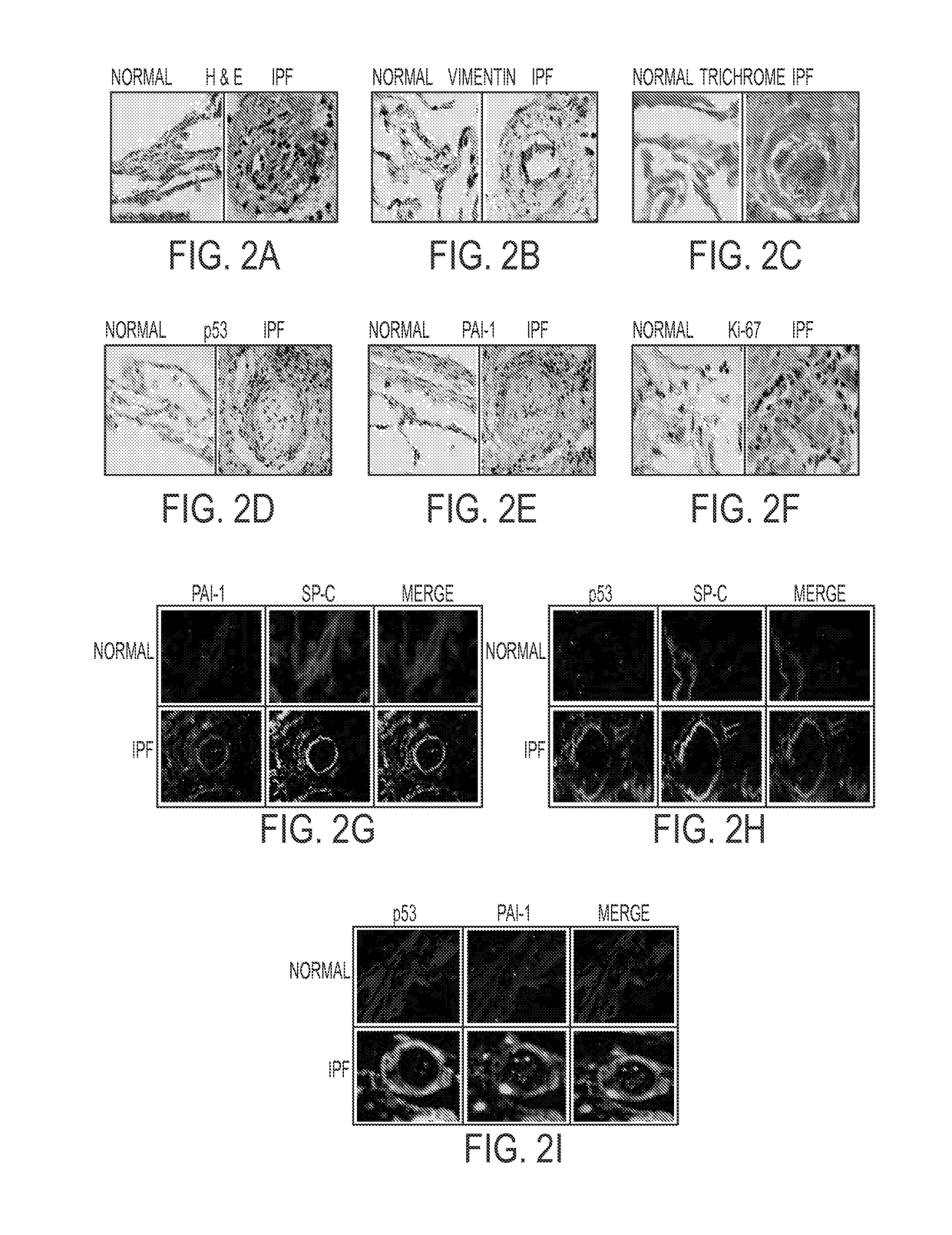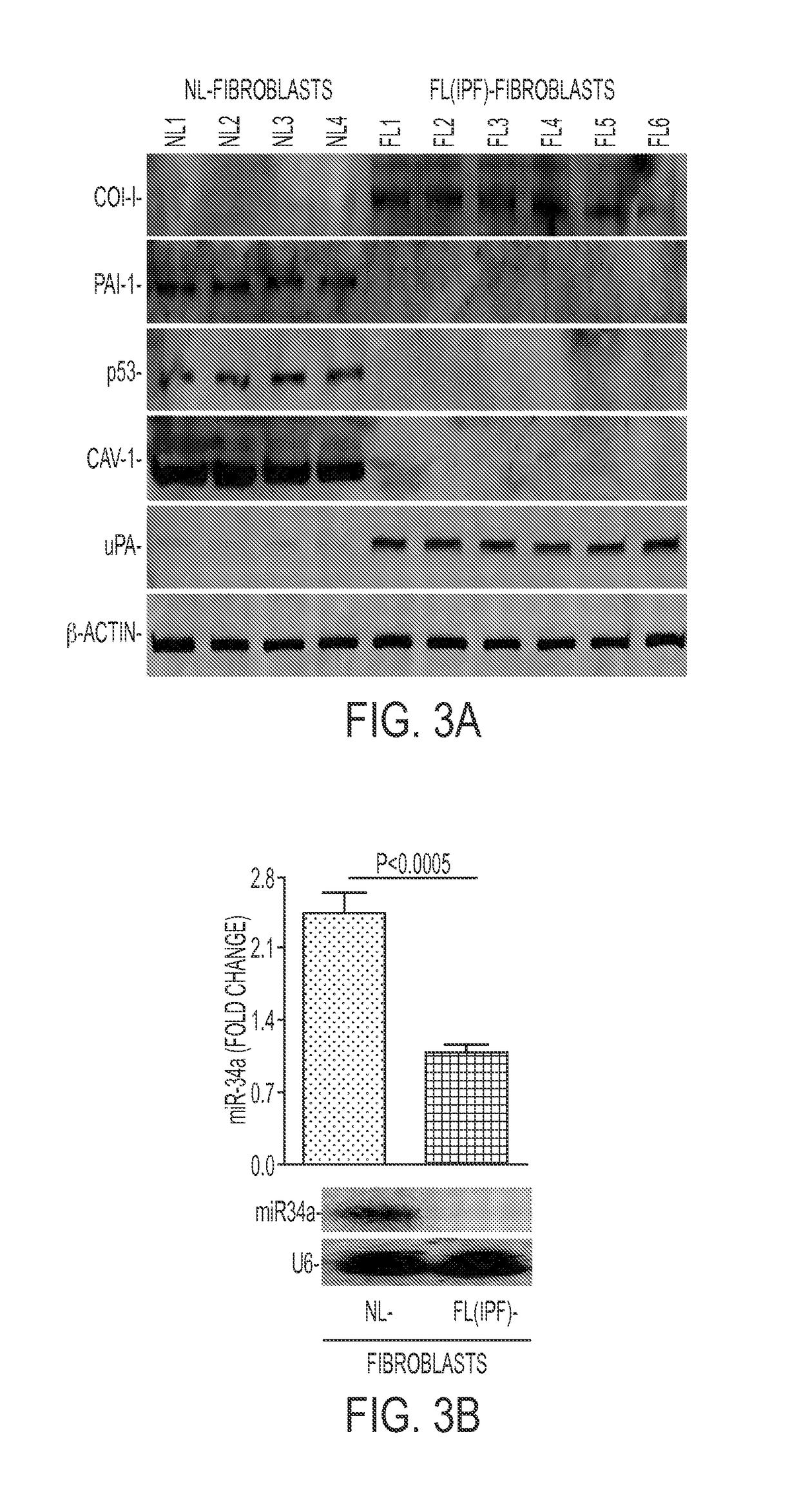Inhibition of pulmonary fibrosis with nutlin-3A and peptides
a technology of nutlin-3a and pulmonary fibrosis, which is applied in the field of biochemistry and medicine, can solve the problems of reducing the viability of ecm, restricting the production and deposition of ecm,
- Summary
- Abstract
- Description
- Claims
- Application Information
AI Technical Summary
Benefits of technology
Problems solved by technology
Method used
Image
Examples
example i
Deceased FL-Fibroblast p53 Expression in Fibrotic Foci of IPF Lungs
[0250]Staining of lung sections from IPF patients and control “normal” subjects with various reagents, including by immunohistochemistry (IHC) (see FIGS. 2A-2I) revealed that IPF tissues display fibrotic foci which are dense with ECM. FL-fibroblasts dispersed in the vimentin-rich foci showed minimal staining for p53 and PAI-1 antigens. However, immunofluorescence staining for SP-C, PAI-1, p53 and active caspase-3 (not shown) demonstrated that alveolar type II (ATII) cells surrounding the fibrotic foci show elevated staining for p53 and PAI-1 antigens, and are positive for active caspase-3, indicating apoptosis of encircling ATII cells. The IHC results reveal that ATII cells encasing fibrotic foci continuously die due to increased expression of p53 and PAI-1. These wounds are replaced by activated fibroblasts which show minimal basal p53 and PAI-1, and elevated ki-67 staining indicating proliferation due to suppressio...
example ii
Decreased Caveolin-1, p53 and PAI and Increased uPA in Human FL Fibroblasts from IPF Lungs
[0251]Cell lysates from NL- and FL-fibroblasts were immunoblotted to reveal changes in the proteins and a miRNA. See FIG. 3A-3B. Basal miR-34a expression was significantly lower in FL-fibroblasts indicating that reduced p53 expression and consequent changes in p53-uPA fibrinolytic system cross-talk contributed to fibrogenesis. Such changes are associated with increased col-I and inhibition of miR-34a. The results further showed that increases in p53-induced miR-34a transcription or stabilization of p53 in human FL-fibroblasts mediated by miR-34a can mitigate lung fibrosis.
example iii
Disparate Expression of uPA, PAI-1 and Col-I mRNAs by Fibroblasts from IPF and “Normal” Lungs
[0252]Total RNA isolated from lung tissues from “normal” subjects and patients with IPF or from NL-were tested for uPA, PAI-1 and col-I mRNA by quantitative RT-PCR and normalized to the corresponding levels of β-actin mRNA. Results are shown in FIGS. 4A-4B.
[0253]Expression of col-I and PAI-1 mRNA significantly increased in IPF lung tissues whereas uPA mRNA was is reduced. Interestingly, unlike IPF lung tissues, col-I and uPA mRNA and lower level of PAI-1 mRNA expression were found in FL-fibroblasts compared to NL-fibroblasts. uPAR protein and mRNA are also elevated in FL-fibroblasts. The elevated PAI-1 in the lung tissues is attributable to increased expression of PAI-1 by lung epithelial cells or macrophages rather than FL(IPF)-fibroblasts. This is consistent with increased expression of col-I, uPA and uPAR, and reduced PAI-1 proteins in FL-fibroblasts from IPF lungs (see FIG. 3A).
PUM
| Property | Measurement | Unit |
|---|---|---|
| time | aaaaa | aaaaa |
| temporal heterogeneity | aaaaa | aaaaa |
| compositions | aaaaa | aaaaa |
Abstract
Description
Claims
Application Information
 Login to View More
Login to View More - R&D
- Intellectual Property
- Life Sciences
- Materials
- Tech Scout
- Unparalleled Data Quality
- Higher Quality Content
- 60% Fewer Hallucinations
Browse by: Latest US Patents, China's latest patents, Technical Efficacy Thesaurus, Application Domain, Technology Topic, Popular Technical Reports.
© 2025 PatSnap. All rights reserved.Legal|Privacy policy|Modern Slavery Act Transparency Statement|Sitemap|About US| Contact US: help@patsnap.com



